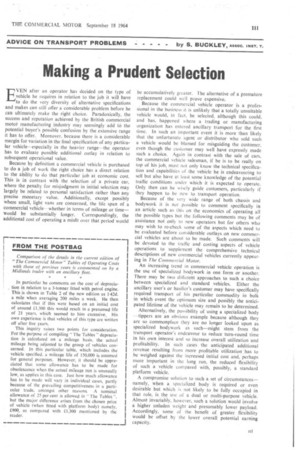FROM THE POSTBAG
Page 113

If you've noticed an error in this article please click here to report it so we can fix it.
Comparison of the details in the current edition of The Commercial Motor" Tables of Operating Costs with those of previous years is commented on by a Midlands trader with an ancillary fleet.
In particular he comments on the cost of depreciation in relation to a 3-tonner fitted with petrol engine. This is shown in Table 2 of the new edition as I-42d. a mile when averaging 200 miles a week. He then calculates that if this were based on an initial cost of around £1,300 this would result in a presumed life of 21 years, which seemed to him excessive.. His own experience is that vehicles of this type are written off after five years.
This inquiry raises two points for consideration. For the purpose of compiling "The Tables" depreciation is calculated on a mileage basis, the actual mileage being adjusted to the group of vehicles concerned. In this particular table, which includes the vehicle specified, a mileage life of 150,000 is assumed for general purposes. However, it should be appreciated that some allowance has to be made for obsolescence when the actual mileage run is unusually low, as applies in this case. Just how much allowance has to be made will vary in individual cases, partly because of the prevailing competitiveness in a particular trade, amongst other reasons. A nominal allowance of 25 per cent is allowed in "The Tables but the major difference arises from the chosen price of vehicle (when fitted with platform body) namely, £900, as compared with £1,300 mentioned by the reader.


































































































































































































































































